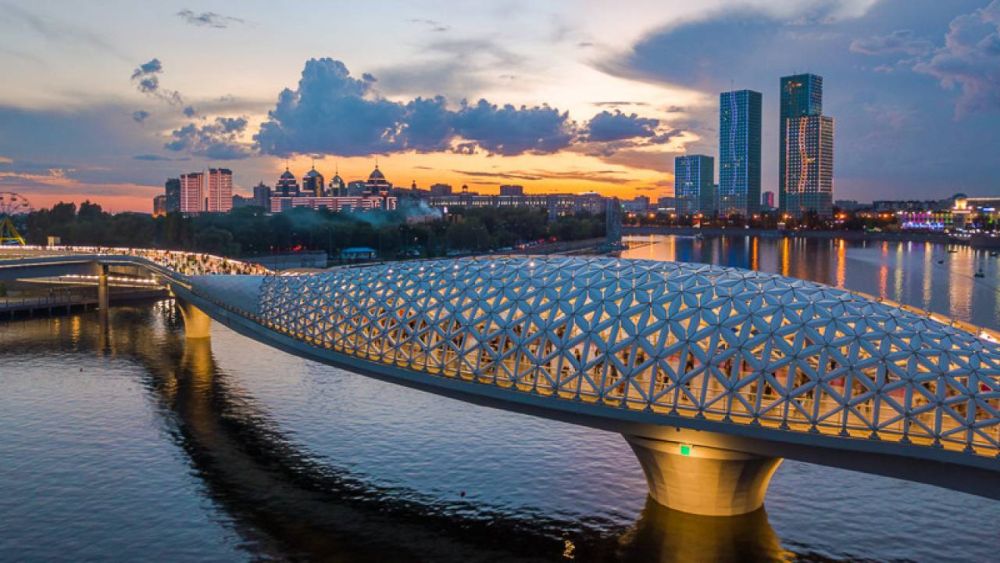

The history of tourism in Atyrau, a city situated at the mouth of the Ural River in Kazakhstan, is intrinsically linked to its strategic geographical location and rich cultural heritage. Historically, Atyrau, formerly known as Guryev, was seen mainly as an industrial city with its economy heavily focused on oil and fish industries. However, over the years, Atyrau has developed its infrastructure and facilities, thereby becoming more attractive for tourists interested not only in its economic importance but also in its historical and cultural significance.
One of the most iconic landmarks in Atyrau is the Atyrau Bridge, which spans the Ural River and symbolically connects Europe and Asia. As the Ural River is commonly regarded as one of the borders between the two continents, the city – and the bridge – have become a place of interest for those intrigued by this continental divide.
The development of tourism in Atyrau can be traced back to the post-Soviet era when Kazakhstan gained independence and started to invest in oil extraction and production. This induced a need for better infrastructure to support the influx of international investors and workers. Consequently, the local government began improving public spaces, hotels, and transportation, hence indirectly boosting local tourism.
In recent years, the city has seen an upturn in the number of tourists, both business and leisure, who come to explore the region's historical sites, enjoy the local cuisine, and experience the unique culture of the Caspian coastal area.
The Atyrau Bridge itself is a testament to modern engineering and design. Completed and opened to the public in the 21st century, the bridge was constructed as part of the burgeoning infrastructure developments in the city. It not only serves a practical purpose, facilitating transportation and commerce, but has also turned into a tourist attraction, offering stunning views of the cityscape and the river divide.
In keeping with the global tourism trends, Atyrau is witnessing a surge in eco-tourism and cultural tourism. Visitors are increasingly interested in the rich biodiversity of the Caspian Sea region, the traditional customs of the local Kazakh people, and the preservation of historical sites. Additionally, there has been a rise in the popularity of bird-watching tours and fishing expeditions, particularly sturgeon fishing, as the region is known for its sturgeon fishery and caviar production.
Culinary tourism is also gaining momentum, with tourists eager to sample traditional Kazakh dishes such as Beshbarmak and Kazy, and to experience the nomadic lifestyle by staying in a traditional yurt.
With its unique location, modern attractions, and commitment to showcasing its cultural and natural resources, Atyrau is poised to continue its growth as an emerging tourist destination in Central Asia.
Although not as famous as other tourist hotspots in Kazakhstan such as Almaty or Astana (now Nursultan), Atyrau—with the iconic Atyrau Bridge as one of its key highlights—has carved out its own niche in the tourism sector. For travelers looking to experience the confluence of modernity and tradition at a crossroad of continents, Atyrau presents a distinctive and enriching journey.